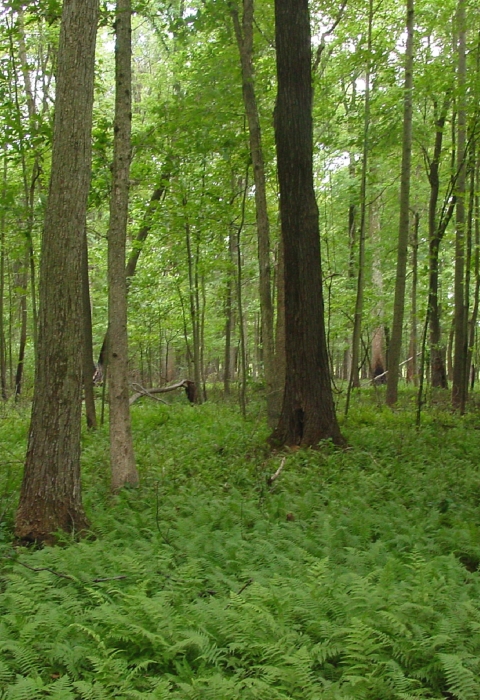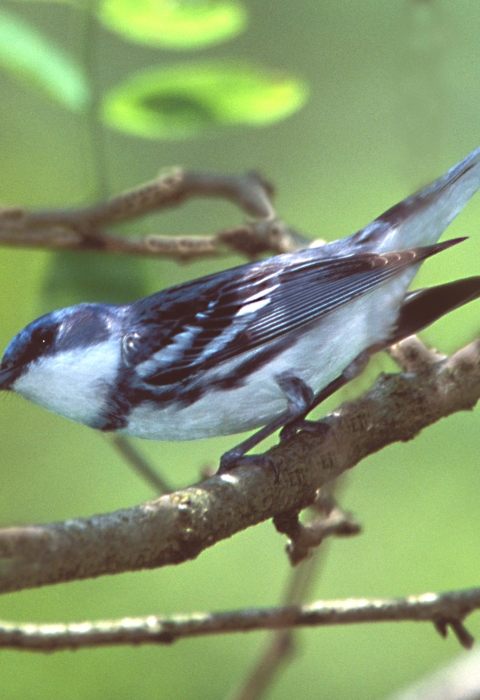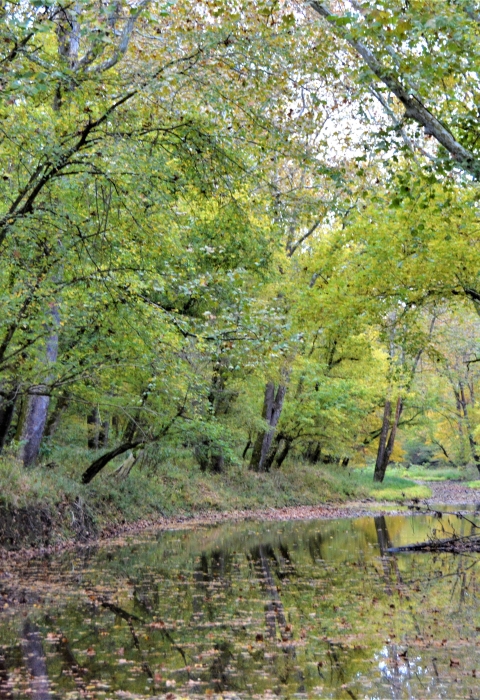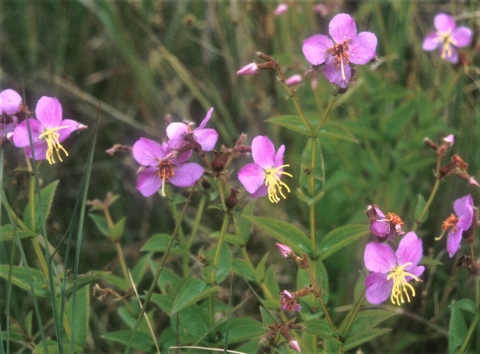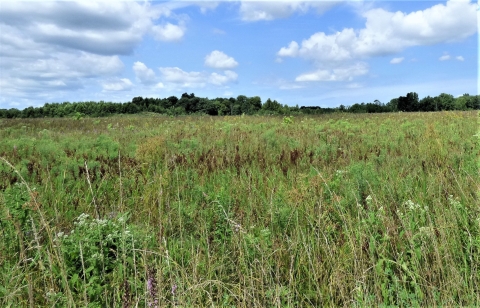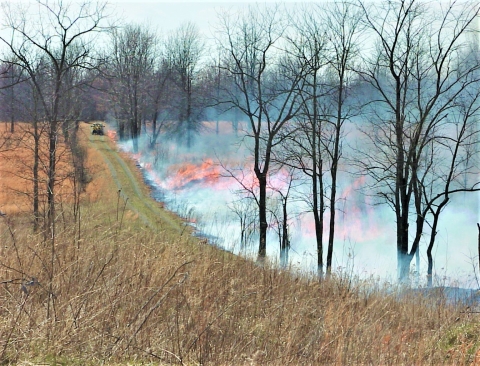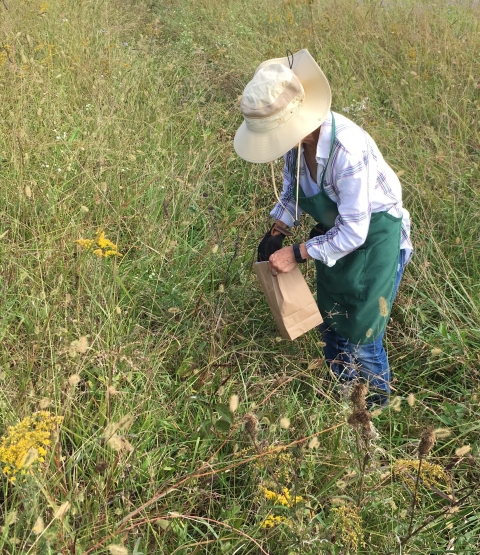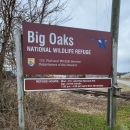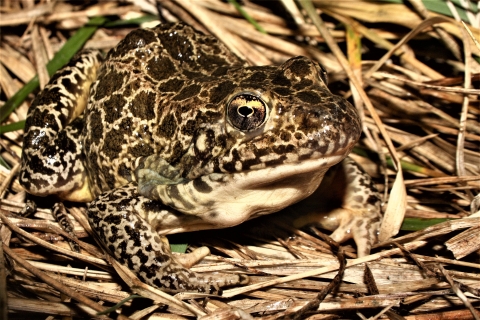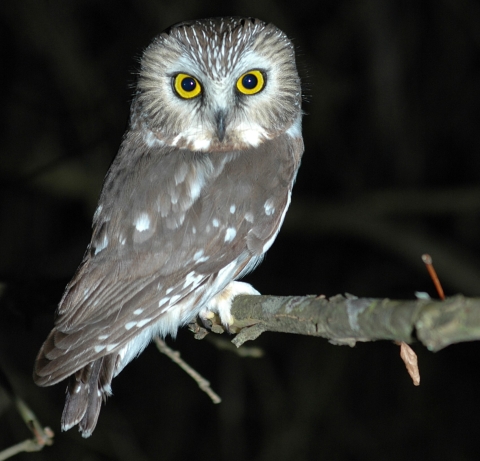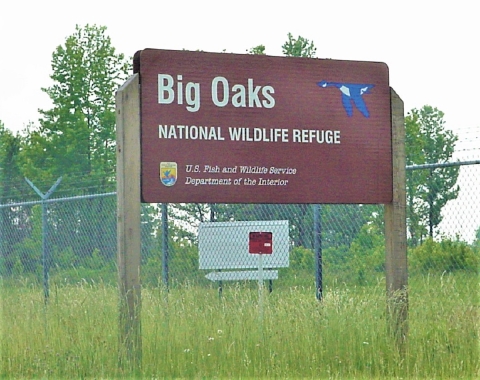What We Do
The National Wildlife Refuge System is a series of lands and waters owned and managed by the U.S. Fish and Wildlife Service. Wildlife conservation is at the heart of the refuge system. It drives everything we do from the purpose a refuge is established, to the recreational activities offered there, to the resource management tools we use. Selecting the right tools helps us ensure the survival of local plants and animals and helps fulfill the purpose of the refuge.
Refuge staff use a variety of habitat management techniques to maintain, recover or enhance plant and wildlife values. Management techniques are carefully considered and employed in varying degrees according to the situation. Big Oaks staff focus their management actions on providing habitat for migratory birds and rare and endangered animal and plant species. Because of the large areas of protected habitat at Big Oaks many uncommon plants include meadowbeauty and climbing fern, can be found there.
Once common grasslands are rare habitats in Indiana but not at Big Oaks. Refuge grasslands provide shelter, breeding sites, and food for many species of declining plants and animals including Henslow's sparrow and Kirtland's snake. Big Oaks also contains one of the largest populations of the grassland dependent crawfish frog in the state.
Management and Conservation
Prescribed burning is a vitally important grassland management tool at Big Oaks National Wildlife Refuge. Fire is used to maintain healthy stands of native grasses and eliminate invasive species invasive species
An invasive species is any plant or animal that has spread or been introduced into a new area where they are, or could, cause harm to the environment, economy, or human, animal, or plant health. Their unwelcome presence can destroy ecosystems and cost millions of dollars.
Learn more about invasive species . Many wildlife species, including deer, bobwhite, and other grassland birds, depend on early successional grasslands that are maintained by fire by Big Oaks.
Many kinds of management activities take place on the refuge including the monitoring of rare and uncommon wildlife populations, the control of invasive plant species, and hunting of deer to control population size. Refuge staff work with state, county, and private organizations on landscape related habitat issues and with private landowners on habitat projects. Refuge staff also do trapping as a management activity to monitor some wildlife species, to protect some endangered and threatened species of migratory birds, and to control certain wildlife populations.Trapping is also used to protect refuge facilities and infrastructure.
Our Projects and Research
Refuge staff have been monitoring and managing small wetlands to improve habitat for state endangered crawfish frogs for many years. Crawfish frogs need shallow potholes that dry up in the summer months to deposit their eggs in to prevent egg predation by fish. Many seasonal potholes have been created or restored on the refuge and now crawfish frogs are increasing in numbers.
Saw-whet owls, a species that nests in the far north, migrate through the refuge area every winter. In cooperation with local universities the refuge does saw-whet banding every November to learn more about the status and distribution of the species. Owls are captured at night in mist-nets and measurements and information are taken before the birds are banded and released.
Wet, flat forest communities known as flatwoods are common on the refuge and contain several rare species, including the four-toed salamander and the locally endemic streamside salamander. Refuge interns and university researchers periodially do surveys of reptiles and amphibians to monitor refuge populations. The caves, seeps and springs of the refuge are also unique for their invertebrate fauna and some invertebrate species new to science were described in these caves.
Other refuge research projects have involved monitoring endangered Indiana bats, American burying beetles, and American kestrels. Volunteers have assisted with many surveys of forest and grassland bird nest productivity, cerulean warbler nesting ecology, and small mammal biodiversity inventories.
Law Enforcement
U.S. Fish and Wildlife Service law enforcement officers have a wide variety of duties and responsibilities. Refuge Officers work closely with state and county officers to enforce federal, state and refuge hunting regulations on Big Oaks and other federal lands. Indiana conservation officers, county officers and the Indiana State Police also work the refuge on a regular basis. Indiana conservation officers can be contacted quickly by calling the South Region Dispatch Center at 812-837-9536.
Law enforcement issues should be reported to the refuge manager by calling 812-273-0783 or emailing bigoaks@fws.gov.
You may also report violations to the Indiana Department of Natural Resources TIP (Turn in a Poacher) line at 1-800-847-4367. You do not need to leave your name.
Laws and Regulations
Because of the past use and history of the property as an ordnance testing facility, all visitors must view a safety video and sign an acknowledgement of danger form prior to entering the refuge. You can view the safety video and purchase an access permit at the refuge office on public use days. Please note that some of these days are closed to other visitors due to hunts. Please call the refuge office before you visit.
- All visitors are required to attend a safety briefing, sign an acknowledgment of danger agreement and obtain a public access permit before entering the refuge. Visitors must possess a valid daily pass at all times. All visitors must check into and out of the refuge in accordance with the provisions of their refuge permit.
- A lottery system is used as needed during public use. Any activity by a refuge visitor that will result in an unfair advantage or improve one’s chance in the lottery is prohibited.
- We prohibit trespass into unassigned areas. In areas posted “Area Closed,” we prohibit entry. It is the responsibility of each person to know where they are at all times.
- Pets must be kept on a leash, except hunting dogs used during refuge squirrel hunting season. All pets are required to wear a collar displaying the owner’s name, address and telephone number.
- Searching for, removing or possessing objects of antiquity or historical significance or unexploded ordnance, munitions or any item(s) associated with the Army’s historical mission is prohibited
- Camping, fires, swimming, dumping, trapping, ATVs and littering are prohibited
- Vehicles and other modes of transportation are allowed only on designated roads. Vehicles are prohibited off road.
- Disturbing or collecting plants or animals and / or parts is prohibited. Wild edible food products like mushrooms, nuts, wild asparagus and berries, as well as shed deer antlers, may be gathered for personal use subject to the following condition: a permit is required, and mushrooms can only be collected only in a mesh bag.
- Spotlighting wildlife, even without weapons, is prohibited
